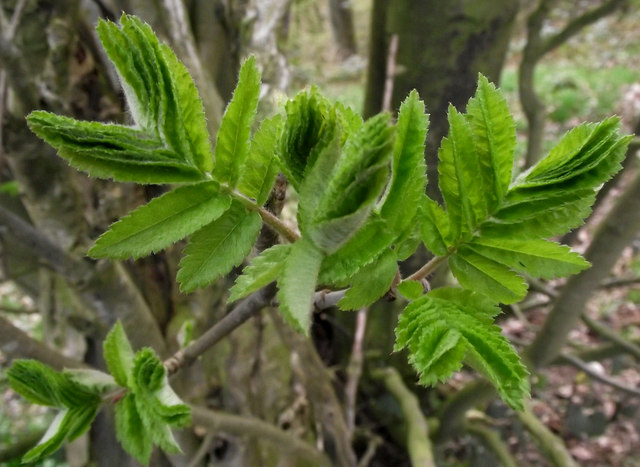Spring is here
Introduction
The photograph on this page of Spring is here by Jonathan Kington as part of the Geograph project.
The Geograph project started in 2005 with the aim of publishing, organising and preserving representative images for every square kilometre of Great Britain, Ireland and the Isle of Man.
There are currently over 7.5m images from over 14,400 individuals and you can help contribute to the project by visiting https://www.geograph.org.uk

Image: © Jonathan Kington Taken: 6 Apr 2011
These Ash leaves were unfurling alongside the Image at the top of Ladderedge Country Park. According to the Woodland Trust ( http://www.british-trees.com/treeguide/ashes/nbnsys0000003949.htm ) the Ash (Fraxinus excelsior) is the fourth most common tree species in Britain where it is a native tree, it is also one of the most likely species to dominate a woodland area. A deciduous tree that can grow to between 15 and 30 metres in height, it has characteristic black buds that appear at the end of each shoot; the green leaves appear in May and consist of 6-12 pairs of oval leaflets with each leaflet irregularly toothed. Ash grows well on heavy and calcareous soils and will survive on the poor soils where other species struggle to grow, its only dislike are the light sandy soil conditions. The wood is both strong and flexible and in the past it has been used by the Anglo-Saxons for their spears and shield-handles. More recent uses include tool handles, furniture, sports equipment, walking sticks, tent pegs, oars, gates, wheel rims, and the wings on the De Havilland Mosquito which flew in World War II were built from Ash wood. In Norse mythology, Yggdrasil, the World Tree is commonly held to be an Ash tree and the first man, Ask, was formed from an Ash. Elsewhere in Europe, snakes were said to be repelled by Ash leaves or a circle drawn by an Ash branch. Irish folklore claims that shadows from an Ash tree would damage crops. In Cheshire, it was said that Ash could be used to cure warts or rickets. In some regions a naked child would be passed through the split trunk of an Ash in a ritual to cure a broken limb or rickets.. In Sussex the Ash and Elm trees were known as Widow Makers because the large branches could often snap off without warning.
Image Location







